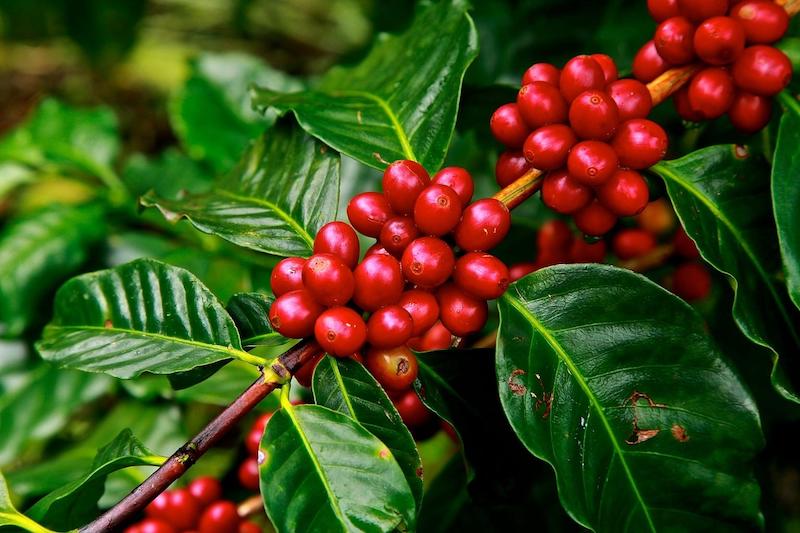
According to Statista, Americans consumed nearly 3.5 billion pounds of coffee beans last year.1 All that coffee and many people still do not know where coffee beans come from! From seed to cup, coffee is a crop with a pretty amazing process and a whole lot of culture and tradition every step of the way.
Below, we’re going to discuss where coffee comes from, how it’s grown, how it’s processed, and how coffee beans aren’t beans at all! Let’s dive in.
Where Does Coffee Grow?
Coffee grows in an astounding number of countries, but the five most popular, according to Statista, are Brazil, Vietnam, Colombia, Indonesia, and Ethiopia. These countries account for the vast majority of coffee bean production, and beans from each of these areas have distinct flavor profiles. The section of the world where coffee grows, called the Bean Belt or Coffee Belt, is between the Tropic of Capricorn and the Tropic of Cancer.

How Do Coffee “Beans” Grow?
First, let’s clear the air: the term “coffee bean” is a bit of a misnomer, because coffee beans are the seeds of a coffee cherry! These seeds grow from seedlings into a flowering coffee tree in about a year, and they bear fruit after around a total of 3-4 years. The cherries that grow contain one or two seeds.
Coffee trees naturally grow under the shade of other trees, which is relatively unique for plants. They often live for several decades and can commonly reach 40 years old. In recent history, farmers began growing coffee plants in the sun out of necessity due to a lack of space to keep up with increasing demand. This need for higher production has led to lower production on a per-plant basis, and it is more draining on resources.
Once cherries are harvested from coffee trees, the processing can begin.
How Are Coffee Beans Removed from the Cherries?
Processing coffee cherries involves removing the husk — or the skin — of the cherry, removing the pulp, and finally removing a thin protective membrane (called the parchment) from the seed inside. There are two primary forms of processing: wet and dry.
1. Processing
Wet processing involves removing the skin and pulp shortly after the harvest. The beans with the parchment still intact are then laid out in the sun to dry.
Dry processing begins with — you guessed it — drying. Freshly picked coffee cherries are laid out in the sun to dry with the husk and pulp still intact. Once dry, the husk and pulp are removed to reveal the seed and parchment inside.

2. Hulling
The last portion of the processing is called hulling, which is a removal of the parchment layer. The result of the final processing step is finally something that resembles what we refer to as coffee beans, only they’re green, dense, hard, and taste like grass!

3. Sorting
These green seeds are then sorted by weight, density, size, or other metric according to the grower or buyer, packaged in moisture-resistant bags inside burlap sacks, and shipped to their new homes where they will be turned into coffee as we’re familiar with.
How do they become the delicious brown beans we know and love? Cue the roasting process!
What is the Roasting Process Like?

Those green coffee beans — also called unroasted coffee beans — are then transported to coffee roasters, either through a middleman or wholesaler or as a result of a direct sale. Direct sales that don’t include middlemen and are at or above a price set by non-profits like Fair Trade USA are referred to as “fair trade” coffee.
Once roasters get their hands on green coffee beans, the real fun begins! Roasters use large machines called coffee roasters to roast their green coffee beans. The roasting process involves churning green coffee beans in a large, heated cylinder for an amount of time specified by the desired roast profile and controlled by the roaster’s skill.
For around 8-14 minutes, the beans go from a green to a yellow, a yellow to light brown, and then a golden brown to a dark brown for darker roasts. The beans are then pulled from the churning cylinder and cooled rapidly to stop the roasting from continuing. The roasting process results in coffee beans as we know them: brown, full of aroma, and delicious!
Conclusion
There you have it: the coffee process from seed to cup! Coffee is such a massive part of our lives, so it’s interesting to see how it’s produced. Starting as seeds from a cherry of the coffee tree, then extracted from the fruit, processed, sorted, and roasted to perfection, the coffee beans you buy in a store likely come from coffee trees that were planted decades ago! Now, we bet you have a new appreciation for your morning coffee, don’t you?
Worth reading:















